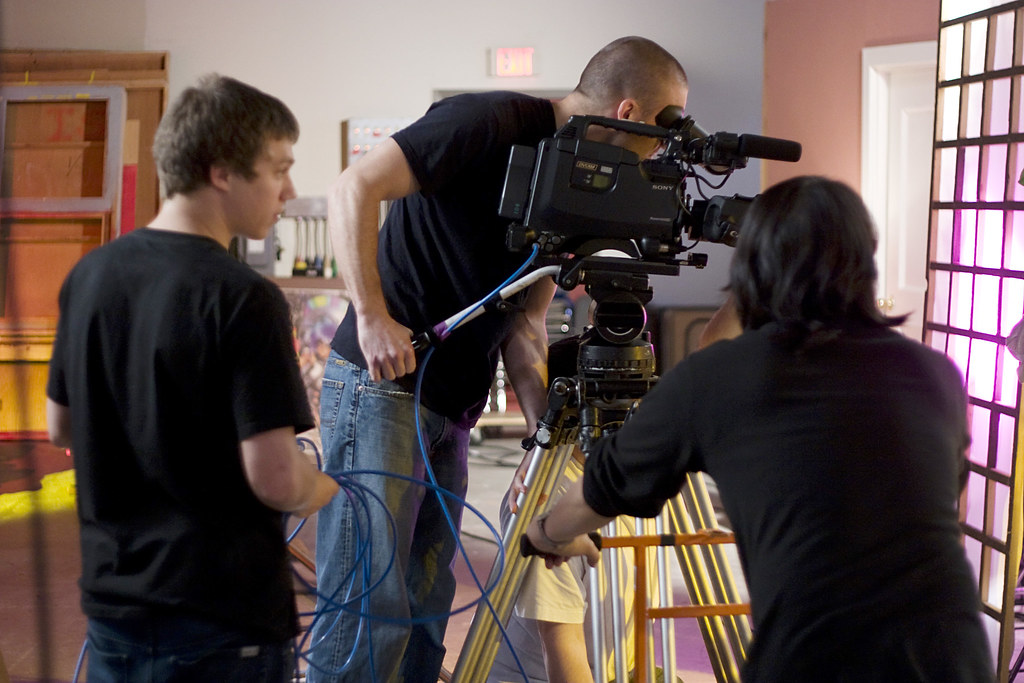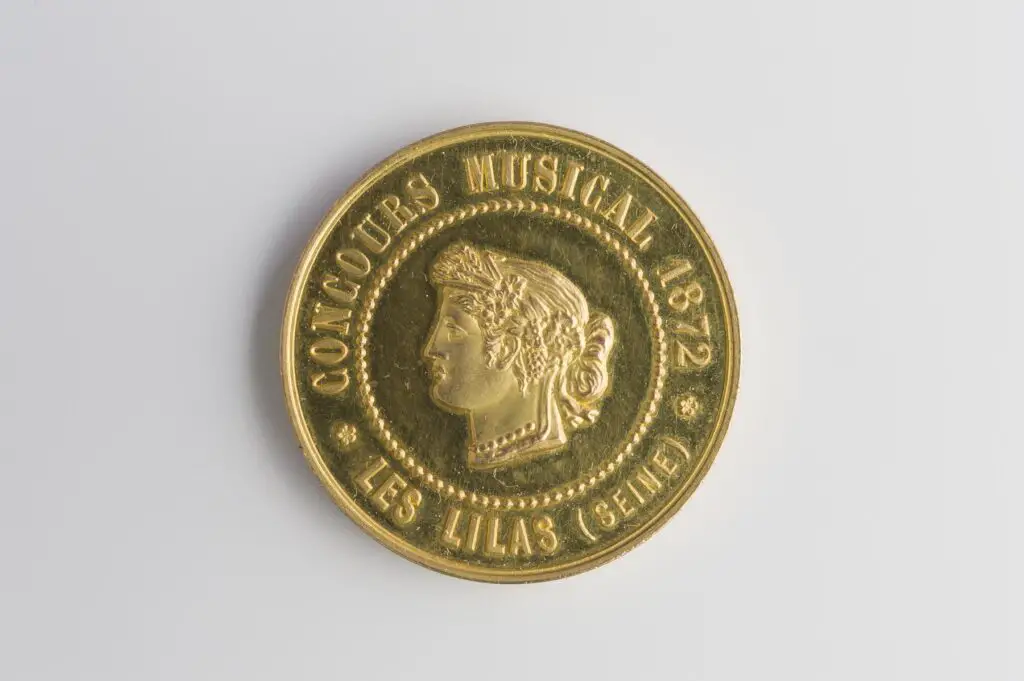FL Studio, formerly known as FruityLoops, is a digital audio workstation (DAW) software that has become increasingly popular for music production. This software is used by many musicians and producers to create high-quality tracks for various genres of music. In this article, we will provide a step-by-step guide for music production with FL Studio. Well take you through the basics of FL Studio interface and tools, as well as advanced music production techniques. Youll also learn how to create beats and work with virtual instruments, mix and master your music, and troubleshoot common issues. By the end of this guide, youll have a solid understanding of how to produce music using FL Studio.
Table of Contents

Getting Started with FL Studio
As a beginner, opening FL Studio for the first time can be overwhelming due to its cluttered interface. However, with time, you will realize that the interface is intuitive and easy to use.
The interface is organized into several sections, including the playlist, channel rack, mixer, browser, and piano roll. The playlist section is where you arrange your music, the channel rack section is where you manage your instruments and samples, the mixer section is where you control the levels of each track, the browser section is where you can browse your files and samples, and the piano roll section is where you can edit your MIDI data.
Before you start creating music, you will need to set up a project in FL Studio. To do this, click on File > New from the menu. This will open a new project with default settings.
To customize the settings of your project, you can click on the Options menu. Here, you can change the tempo, time signature, and other project settings. Take some time to familiarize yourself with the different settings and options available so that you can create a project that suits your needs.

Basic Music Production Techniques in FL Studio
To start creating music, you can add sounds to your project in the channel rack. You can add instruments, samples, and effects to your project by dragging and dropping them from the browser.
The piano roll is an essential tool for creating melodies in FL Studio. It allows you to edit MIDI notes by clicking and dragging them, and adjust the length and velocity of each note.
When creating drum patterns, you can use the step sequencer or the drum sequencer. The step sequencer allows you to program patterns using a grid, while the drum sequencer provides a more visual representation of the drum pattern.
To get the most out of FL Studio, here are a few tips and tricks from experienced users:
- Take advantage of the playlist view to arrange and organize your project.
- Use the mixer to control the levels and effects of each instrument in your project.
- Experiment with different time signatures and tempo changes to add interest and variety to your music.
Personal Experience and Insights
As a music producer with years of experience using FL Studio, I’ve learned that simplicity is key. It’s important to start with a simple idea and build on it gradually, rather than trying to create something complex right from the start.
One of the most useful techniques I’ve learned is using the playlist view to organize my project. This allows me to easily arrange different sections of my song and make changes as needed.
I’ve also found that using the mixer is essential for achieving a professional sound. By adjusting the levels and effects of each instrument in the mixer, I can create a balanced mix that sounds great on any system.
Finally, I’ve learned that experimentation is key to creating unique and interesting music. By trying out different time signatures, tempos, and effects, I can create music that stands out and captures the listener’s attention.
Overall, by focusing on simplicity, organization, and experimentation, you can create music that is both enjoyable to make and listen to.

Advanced Music Production Techniques in FL Studio
FL Studio is a versatile digital audio workstation that offers many advanced music production techniques. In this section, we will explore the use of MIDI controllers, MIDI patterns, and automation in FL Studio.
Using MIDI Controllers in FL Studio
MIDI controllers are hardware devices that allow you to control software instruments and effects using physical knobs, buttons, and faders. FL Studio supports a wide range of MIDI controllers, including keyboards, drum pads, and MIDI mixers.
To use a MIDI controller in FL Studio, you first need to connect it to your computer via USB. Once you’ve done that, you can assign the MIDI controller to a software instrument or effect in FL Studio. This will enable you to manipulate the sound in real-time, giving you more control and precision over your music.
Creating and Editing MIDI Patterns in FL Studio
MIDI patterns are a series of MIDI notes arranged in a specific sequence. In FL Studio, you can create and edit MIDI patterns using the piano roll. Creating a MIDI pattern is a simple process. You can draw in notes by clicking and dragging your mouse in the piano roll. You can adjust the length and velocity of each note, as well as the timing of the notes to create complex melodies and rhythms.
Editing MIDI patterns is also a breeze in FL Studio. You can use various editing tools such as the brush tool, pencil tool, and eraser tool to make changes to the MIDI pattern. You can also quantize the MIDI notes to ensure they are perfectly aligned with the timing of your song.
Using Automation in FL Studio
Automation is a technique used in music production to change the settings of a software instrument or effect over time. In FL Studio, you can automate almost any parameter using the automation clip. For instance, you can automate the panning of a sound, the volume, the filter cutoff, or any other parameter you wish.
To use automation in FL Studio, first, locate the parameter you want to automate. Then, right-click on the parameter and select “Create automation clip”. This will create an automation clip that you can edit to change the value of the parameter over time. You can also use the automation clip to create fades, volume swells, and other effects that can enhance the musicality of your track.
Additional Insights from Experienced FL Studio Users
Here are a few additional insights from experienced FL Studio users on advanced music production techniques:
- Take the time to experiment with different automation techniques to add depth and interest to your music.
- Use MIDI controllers creatively to add complexity and nuance to your music.
- Don’t be afraid to take risks and try new techniques sometimes the best results come from pushing the boundaries of what’s possible.
Personal Experience and Insights
As a music producer, I’ve found that MIDI controllers can be a game-changer in music production. Recently, I was working on a song that needed a more organic feel to it. I decided to use my MIDI keyboard to play in the chords and melodies instead of programming them in the piano roll.
Using the MIDI keyboard allowed me to add more expression and nuance to the music. I was able to use the velocity of the keys to control the dynamics of the notes and create a more natural feel to the music.
If you have a MIDI controller, I highly recommend experimenting with it to see how it can enhance your music production process.

Creating Beats with FL Studio
FL Studio’s drum sequencer is one of the most robust tools for creating beats in the music production industry. It allows you to create drum patterns using a grid-based interface, which is easy to use and navigate.
To create a drum pattern, simply click on the grid to add a hit. You can adjust the timing and velocity of each hit, as well as the length of the pattern. FL Studio provides a vast collection of drum samples and sounds, which you can use to create your beats. You can also import your samples and use them in your beats.
Once you’ve created a drum pattern, you can edit and customize it to fit your needs. You can adjust the velocity of each hit to create a more dynamic pattern. You can also add swing to the pattern to give it a more natural feel. FL Studio’s playlist editor allows you to create complex arrangements of your patterns, giving you complete control over your drum patterns.
To add effects to your drums in FL Studio, first, select the drum track in the mixer. Then, click on the effect slot and select the effect you want to add. You can add a wide range of effects to your drums, including reverb, delay, and distortion. FL Studio’s effects plugins are renowned for their quality and ease of use, which makes them an essential part of any music production workflow.
Here are a few additional tips and tricks for creating beats with FL Studio:
- Experiment with different drum samples and effects to create a unique sound that stands out.
- Use swing and other timing adjustments to create a more natural and interesting beat.
- Don’t be afraid to layer different drum sounds or add additional percussion to add depth and complexity to your beats. This can add a unique feel to your beats and make them more interesting.

Working with Virtual Instruments in FL Studio
Virtual instruments are software synthesizers that allow you to create a wide range of sounds. In FL Studio, you can create different instrument tracks, including synths, pianos, and drums. These virtual instruments come with a vast library of presets, so you can choose the one that best suits your project.
To use a virtual instrument in FL Studio, first, add it to your project in the channel rack. Then, create a MIDI pattern in the Piano Roll and assign it to the virtual instrument. The Piano Roll is where you can create and edit your MIDI notes, and it is a crucial component of FL Studio’s music production workflow. You can adjust the settings of the virtual instrument to create a custom sound.
To get the most out of virtual instruments in FL Studio, it’s important to experiment with different settings and presets. You can also use automation to change the settings of a virtual instrument over time, creating dynamic and interesting sounds that evolve with your project.
Here are some additional tips and tricks for working with virtual instruments in FL Studio:
- Use the mixer to adjust the volume and panning of your virtual instruments to create the desired sound.
- Layer different virtual instruments or add effects to create a unique and complex sound.
- Use the built-in arpeggiator and chord generator to create complex musical patterns with ease.
- Customize your virtual instrument settings by adding and adjusting envelopes, LFOs, and other modulation sources.
- Use the sampler to create your custom instrument by recording and manipulating your own samples.
Take the time to experiment with different virtual instruments, settings, and presets to find the sound that works best for your project. With FL Studio’s extensive library of virtual instruments and tools, the possibilities are endless.

Mixing and Mastering in FL Studio
Mixing and mastering are two critical steps in the music production process that can make or break a track. In FL Studio, you can use the mixer and master channel to achieve a polished and professional sound.
Mixing Your Tracks
Mixing is the process of balancing the levels of each track in your project. In FL Studio, you can mix your tracks using the mixer, which provides you with control over the volume, panning, and effects of each track.
To mix your tracks in FL Studio, start by organizing your mixer tracks and routing them to the appropriate channels. Then, adjust the levels of each track in the mixer to achieve a cohesive and balanced sound. It is important to take your time and experiment with different settings to ensure that every element in your mix is heard clearly and nothing is overpowering.
Mastering Your Music
Mastering is the final step in the music production process that ensures your music is ready for distribution. In FL Studio, you can master your music using the master channel, which is where your mixdown should be routed.
To master your music in FL Studio, first, add any final effects to the master channel, such as EQ, compression, and limiting. Then, export your project as a WAV or MP3 file. It is important to note that mastering should only be done on the final mix and not on individual tracks.
Tips for Mixing and Mastering in FL Studio
- Take the time to carefully balance the levels of each track to create a cohesive and polished sound.
- Use effects sparingly and purposefully to enhance the overall sound of your mix.
- Consider using reference tracks to compare your mix to a professional mix and ensure that you’re achieving a high level of quality.
- Use compression and EQ to shape the individual elements in your mix.
- Avoid over-limiting your master as this can lead to distortion and loss of dynamics.
- Use metering tools to ensure that your mix is not too loud and is properly balanced.
By following these tips and taking your time to fine-tune your mix and master, you can achieve a professional and polished sound using FL Studio.

FL Studio Plug-Ins and Resources
In addition to its built-in tools, FL Studio has a vast array of plug-ins that you can use to create professional-sounding music. These plug-ins include various synthesizers, samplers, and effects processors such as Harmor, Sytrus, and Gross Beat.
Harmor is a powerful additive synthesizer that allows you to create complex sounds by combining multiple waveforms. Sytrus, on the other hand, is a versatile FM synthesizer that can produce everything from classic analog sounds to futuristic digital tones. Lastly, Gross Beat is a real-time, time-shifting effect that can be used to create stuttering and glitchy sounds.
If you’re looking for sounds and samples to use in your productions, there are plenty of resources available online. Splice, for example, offers a vast library of high-quality samples, loops, and presets that you can browse and download. Similarly, Loopmasters and Sample Magic provide a wide range of sample packs and sound libraries, covering various genres and styles.
Whether you’re looking for new sounds or want to experiment with different effects, FL Studio’s plug-ins and resources offer endless possibilities for music production.

Troubleshooting Common Issues in FL Studio
FL Studio is a versatile digital audio workstation that can encounter a range of issues. While FL Studio is a powerful tool, it can be prone to errors and issues that can disrupt your workflow. Some common issues include crashes, audio glitches, and latency.
To resolve issues in FL Studio, it’s important to first identify the cause of the issue. One of the most effective ways to do this is by reviewing the error message that appears to understand what the problem is. Once you know the cause of the issue, you can then try various troubleshooting techniques, such as updating your drivers or adjusting your buffer size.
Here are some tips and tricks for troubleshooting some common issues in FL Studio:
1. Crashes
- Save your project frequently to avoid losing work.
- Try opening a new project and see if the issue persists. If the error only appears in one project, it may be a problem with that specific file.
- Try disabling plugins or VSTs that may be causing the issue.
2. Audio Glitches
- Increase your buffer size to reduce the likelihood of audio glitches.
- Check that your audio interface is compatible with FL Studio.
- Check that your drivers are up to date and configured correctly.
3. Latency
- Adjust your buffer size to reduce latency.
- Consider using ASIO drivers for lower latency.
- Check that your audio interface is compatible with FL Studio.
To optimize FL Studio performance, it’s important to make sure that your computer meets the minimum system requirements. You can also adjust the performance settings in FL Studio to reduce CPU usage, such as reducing the number of active plugins.
By following these tips and tricks, you can troubleshoot common issues in FL Studio and optimize your workflow. However, if you encounter persistent issues, it may be helpful to reach out to the FL Studio community or technical support team for further assistance.
Conclusion
In conclusion, FL Studio is a versatile and highly capable digital audio workstation that can help you produce music of professional quality. By following the step-by-step guide outlined in this article, you can gain a better understanding of how to use FL Studio for music production. Whether you are a beginner or an experienced producer, FL Studio has a range of tools and features that can help you bring your musical ideas to life.
Experimenting with different techniques and effects is an essential part of the music production process, so don’t be afraid to try new things and push the limits of what you can do with FL Studio. Remember to take your time, and enjoy the creative journey.
We hope this guide has been helpful in your music production journey. If you’re interested in learning more about music production techniques, check out our other articles on our website. Keep practicing, and you’ll be making great music in no time!
Questions
Who uses FL Studio for music production?
Musicians and producers of all genres use FL Studio for music production.
What is FL Studio used for in music production?
FL Studio is a digital audio workstation used for creating, recording, and producing music.
How do I get started with FL Studio for music production?
Open FL Studio, set up a project, and add sounds to the channel rack to start creating music.
What are some advanced music production techniques in FL Studio?
MIDI controllers, MIDI patterns, and automation can be used for advanced music production in FL Studio.
How do I mix and master my music in FL Studio?
Use the mixer to balance levels, and add effects to the master channel for mastering.
What if I encounter issues with FL Studio during music production?
Troubleshoot by reviewing error messages, checking drivers, and increasing buffer size.

